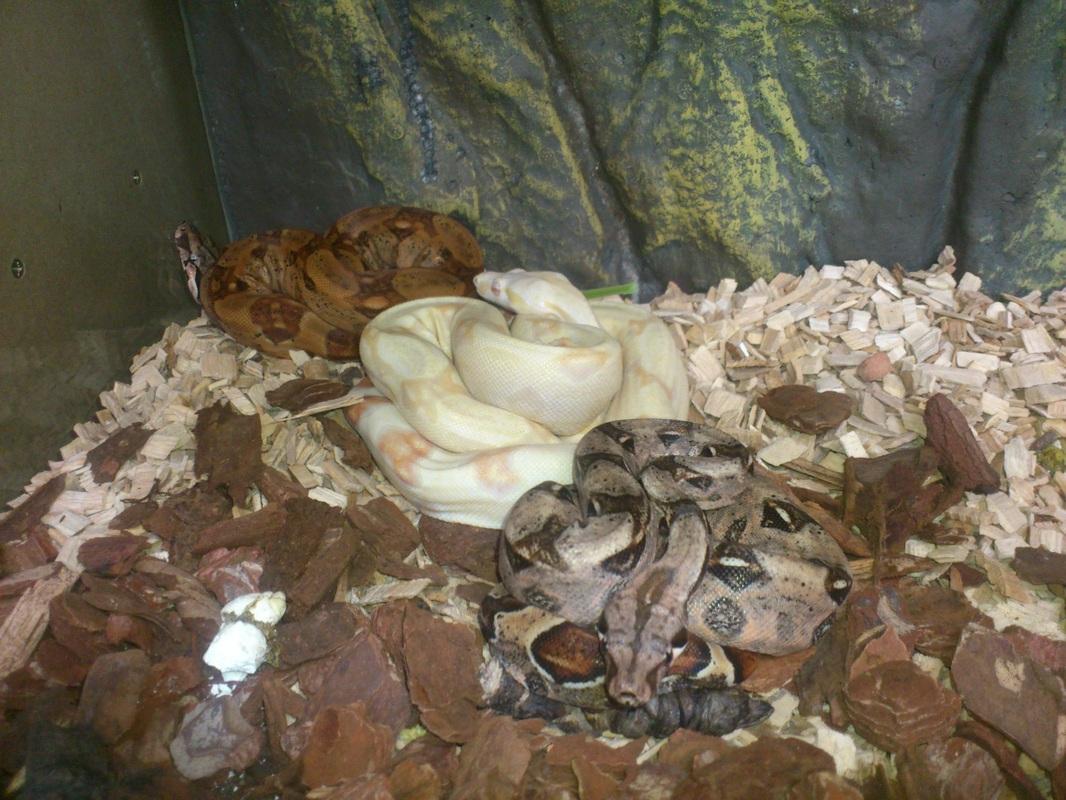Before bringing a boa constrictor into your home, it’s essential to understand what caring for one truly involves. These impressive snakes can make rewarding pets, but their size, strength, and specific needs mean they’re not for everyone. From long-term commitment and enclosure requirements to feeding habits and safety considerations, there’s a lot to know before welcoming a boa into your life. This guide covers the most important things to consider so you can decide if a boa constrictor is the right pet for you.
Boa Constrictors Are Not Starter Pets
Let’s get one thing straight: buying a boa constrictor is not for beginners. While they’re relatively docile for their size, they require a much higher level of care than, say, a corn snake or leopard gecko. Boas can grow anywhere from 6 to 13 feet long, depending on the species and gender, and they have powerful muscles, as you’d expect from a constrictor. Their enclosure space, heat, humidity, and diet all need to be precisely maintained, and they live a long time, often 20 to 30 years. Don’t let that scare you off, though. If you’ve got the patience and preparation, a boa can make an incredible pet. Just don’t go into it unprepared.
Enclosure Goals:
When it comes to housing, size definitely matters. This ain’t no plastic shoebox setup. For an adult boa, you’re looking at a minimum enclosure size of 6 feet long, 2 feet wide, and 2 feet tall. Yep, that’s about the size of a small couch. You’ll also need to deck it out with:
- A secure locking lid or doors (boas are escape artists!)
- A thermal gradient—warm side around 88–90°F, cool side near 78°F
- Humidity control: 50% to 70% is the sweet spot
- Hides on both ends for stress relief
- Substrate like cypress mulch or aspen
If you’re eyeing Boa Constrictor Breeders and planning ahead, make sure your setup grows with the snake. A baby boa might fit in a 20-gallon tank, but that won’t last long!
Diet & Feeding:
Here’s where some folks start to feel a bit queasy: boa constrictors eat whole prey—mice, rats, and sometimes even rabbits, depending on their size. The feeding schedule typically goes like this: hatchlings should be fed every 5 to 7 days, juveniles every 7 to 10 days, and adults every 2 to 4 weeks. It’s best to offer frozen-thawed prey to avoid injuries that can occur with live animals. And yes, you’ll need to store those feeders in your freezer, preferably in a separate bin—unless you’re okay with the occasional snake food surprise next to your frozen peas.
Health & Hygiene:
Veterinary care for reptiles can be hard to find, so it’s always better to prevent health issues before they start. Common concerns for boa constrictors include respiratory infections, often caused by low temperatures or excessive humidity; mites, which are a persistent nuisance for many keepers; mouth rot, a bacterial infection that can become serious if untreated; and inclusion body disease (IBD), which is deadly and incurable. To give your boa the best chance at a long, healthy life, make sure you get your snake from reputable boa constrictor breeders—a healthy start makes a huge difference.
Morph Mania:
Here’s where things get fun—boa morphs. These genetic variations give your snake unique patterns and colors that can be absolutely jaw-dropping. Whether you want a ghost boa, jungle morph, albino, or even something ultra-rare like a sharp sunglow, the options are as wide as a boa’s yawn.
While morphs don’t usually affect a boa’s health, it's still important to:
- Buy from trustworthy constrictor breeders
- Understand the genetics involved
- Know that rare morphs = higher price tag
If you’re going to buy Boa Constrictors based on morphs, make sure you’re doing it for more than just Instagram likes. A healthy, well-tempered snake should always come first.
Handling Commitment:
Let’s be real—boa constrictors are showstoppers. But their care isn’t glamorous 24/7. You’ll need to commit time weekly (if not daily) for spot cleaning, handling, and general checkups. These aren’t low-maintenance reptiles you can ignore for days on end.
Consider this your relationship checklist:
- Time: Can you dedicate regular time to interaction and maintenance?
- Space: Do you have room for a 6–8 foot enclosure, possibly more?
- Long-term: Are you ready to commit for 20+ years?
Choosing the Right Breeder:
Not all breeders are created equal. When looking into boa constrictor breeders, keep your standards high. You want someone who:
- Specializes in boas and has detailed knowledge of care, genetics, and health
- Offers documentation or health guarantees
- Has clean, well-maintained facilities
- Answers your questions without dodging or vague answers
Ask around in reptile forums or Facebook groups. Word of mouth goes a long way in the reptile community. A good breeder won’t just sell you a snake—they’ll be a resource you can return to again and again.
Conclusion:
Getting a boa constrictor isn’t just a weekend whim—it’s a serious lifestyle choice. These beautiful, muscular reptiles demand attention, care, and respect. They’re calm, majestic, and downright mesmerizing—but only if you’ve laid the groundwork. If you’ve read through all this and still feel that excited pull in your gut, then congrats—you might just be boa material. Just don’t cut corners. Whether it’s housing, feeding, or sourcing, every detail matters.
Ready to Start Your Journey?
If you’re looking to kick things off the right way, it all begins with a reputable breeder who knows their stuff inside and out. That’s where Wilbanks Captive Bred Reptiles comes in. As one of the most trusted names in the business, Wilbanks offers top-quality boas, bred with care and professionalism. Whether you're after a striking morph or a solid starter snake with a great temperament, Wilbanks has the experience, ethics, and stock to match your needs.

